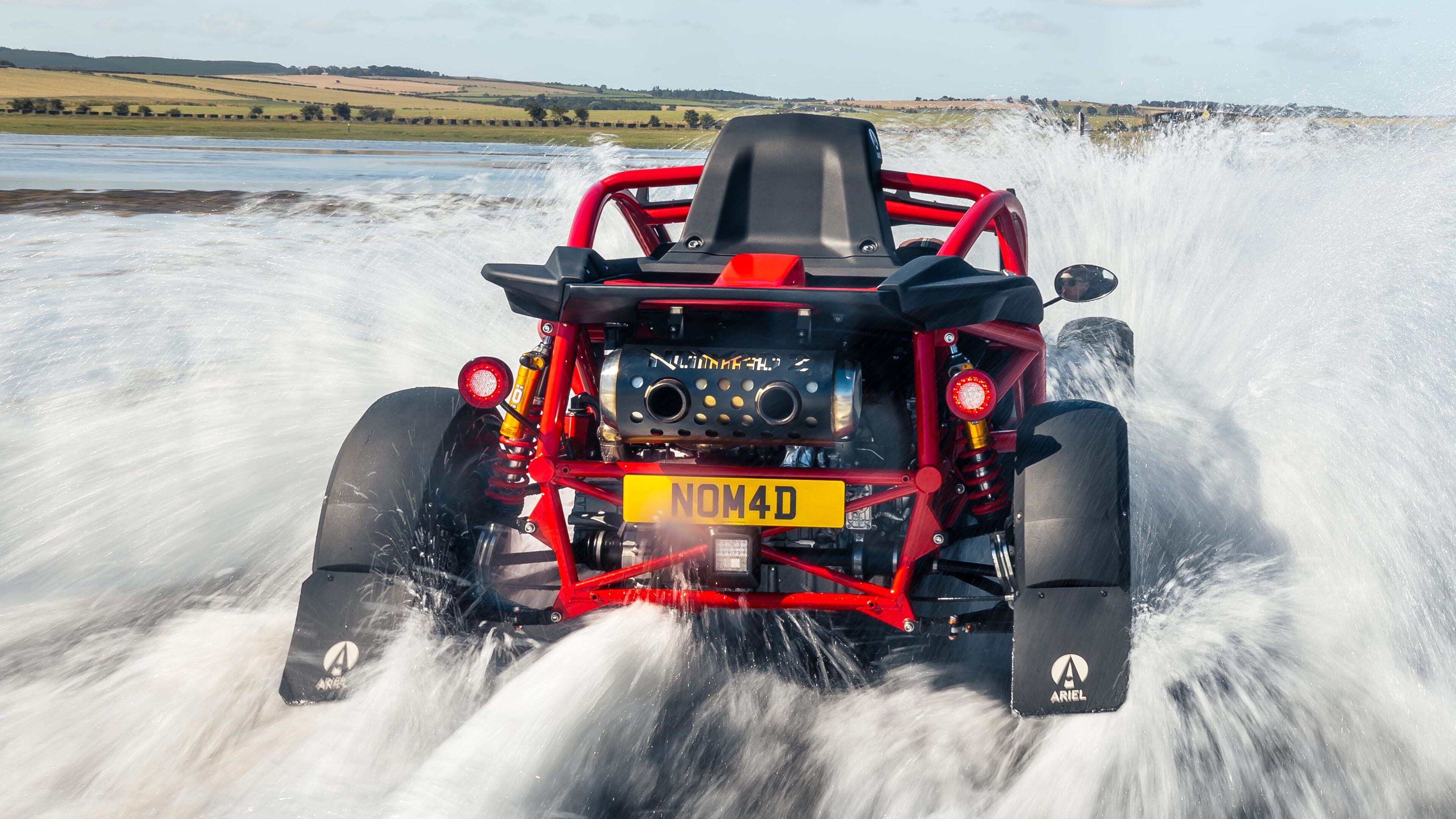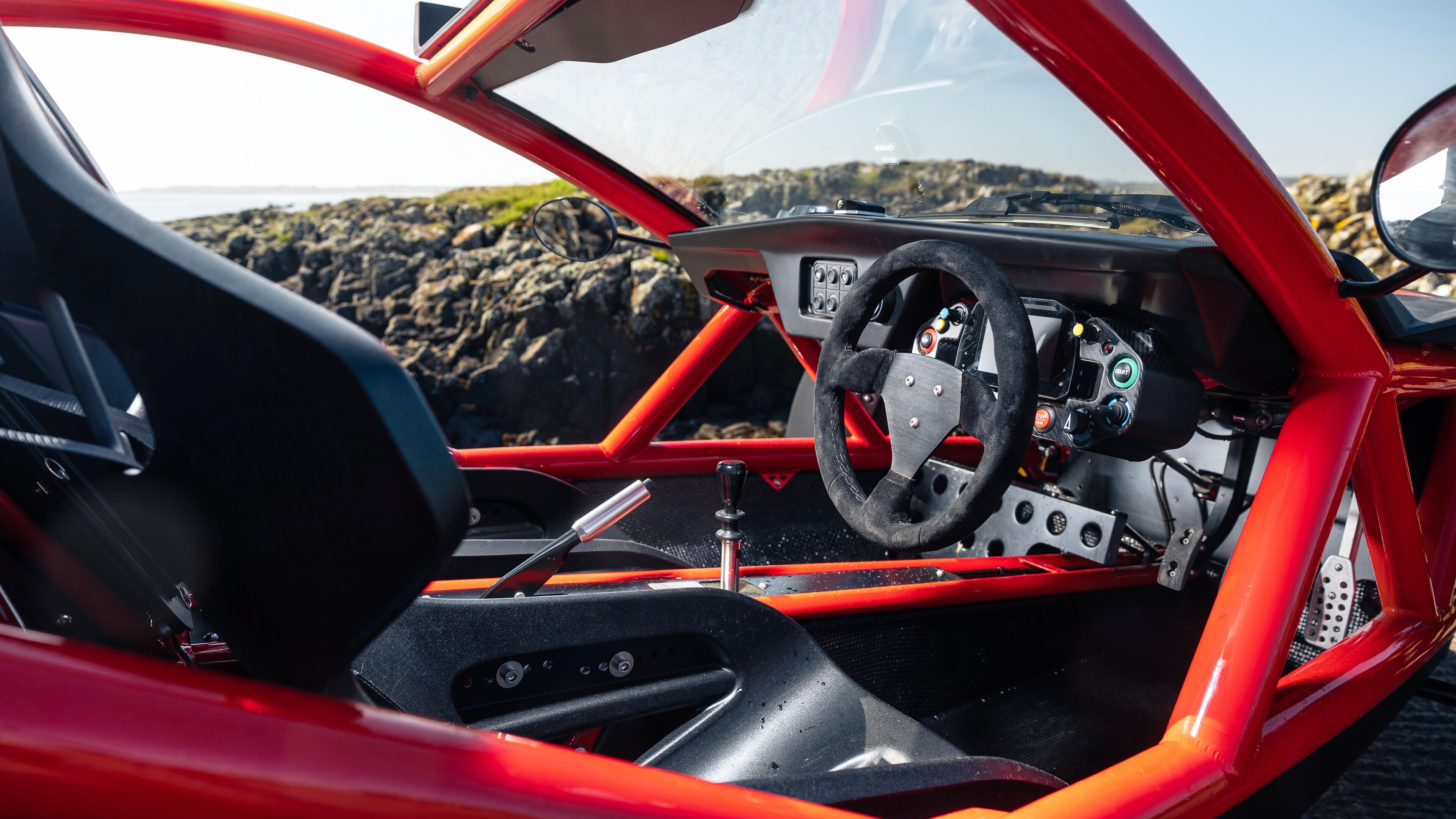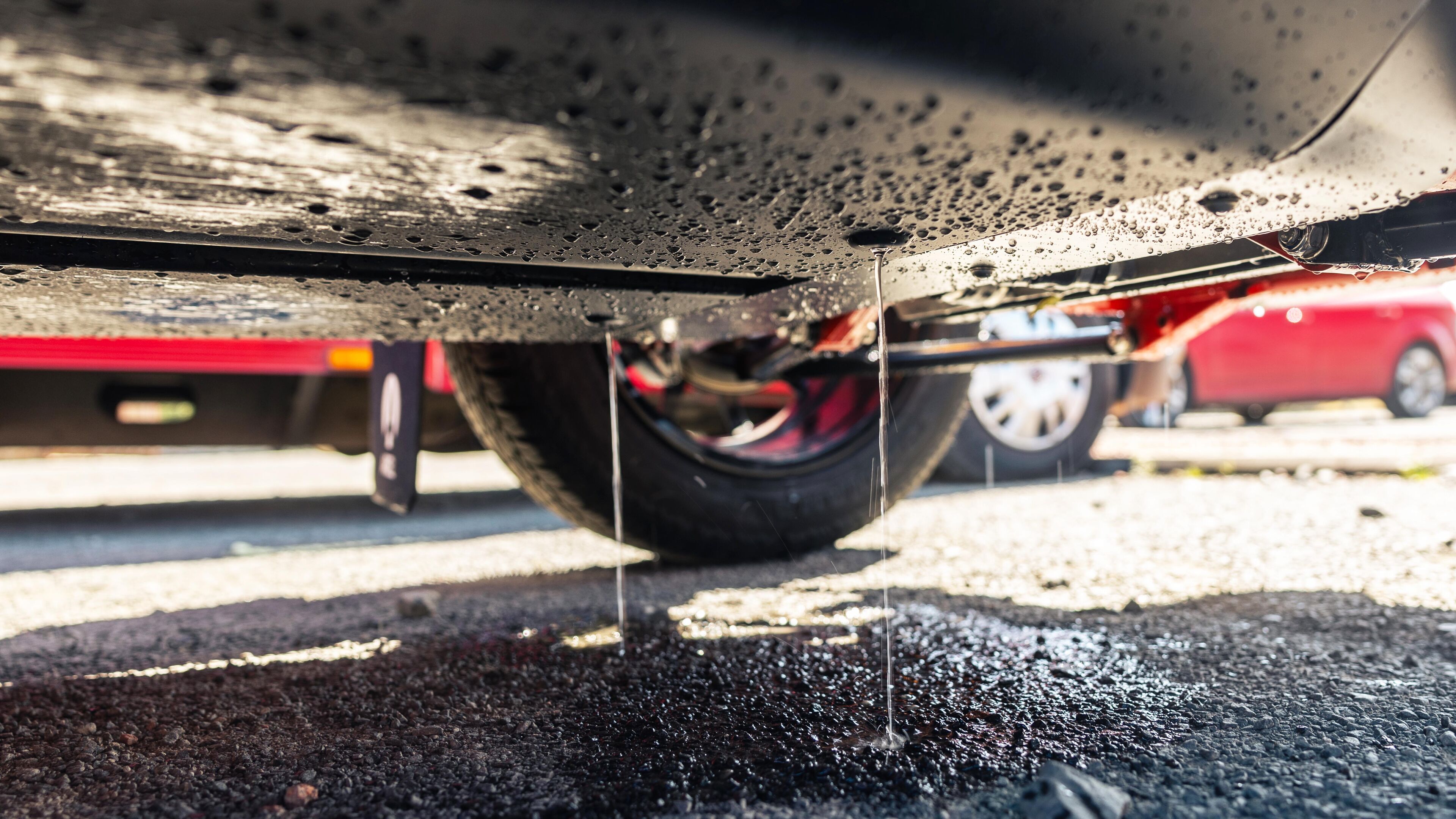
Ariel Nomad 2: "the joys of this car are poetic"
No doors, no roof, no boot, but at least there's a windscreen. TG puts on its waterproofs and takes the Nomad 2 for a swim...
Mariners will always respect the sea. In difficult times they’ll be in blind fear of its implacable power. An incoming tide is a landlubber’s window on its power. As King Cnut predicted. When the waters are approaching from both sides the fear is doubled and more.
One of the most relatably terrifying episodes in scripture follows the parting of the Red Sea for Moses to lead his people through. The divinely created causeway closes afterward, drowning their chasing persecutors... “And the waters returned, and covered the chariots, and the horsemen, and all the host of Pharaoh that came into the sea.”
In comparison, today’s Top Gear jeopardy is trivial. It’s neap tides, the gentlest ones, and a blissfully calm day as we traverse the Holy Island causeway. This road is the lifeline to the fishing village on the Northumberland outcrop of Lindisfarne. It’s a tourist honeypot too, with up to 3,000 vehicles crossing daily during the intervals when the waters don’t cover the road.
Photography: Jonny Fleetwood
And of course tide tables give full predictability of safe crossing times. Brutally stern notices warn against risking it when the waters are lapping over the tarmac on an incoming tide. Partway along, a refuge hut stand on stilts. Plenty of hapless drivers do indeed have to climb the ladder, huddle in the hut, and watch the rising salt water slowly drown their car.
We take the early morning window to drive onto the island. We’re pretty much the sole visitors. A tang of salt is in the air, the fishermen land their haul, and however eerie this would be in a winter mist, today’s bright glassy sunlight blinds me to much sense of the spirits of St Cuthbert and the early Christians and raiding Vikings. Four hours later, the tide has nearly fallen enough to uncover the causeway. A mile-plus queue, largely camper vans, has formed on the mainland side waiting to cross.
They aren’t expecting this. An arachnid buggy approaches from the island end, hosing water in every direction. Onboard, I’m beginning to think I might have gone too soon. I’m wearing waterproof trousers but the wet is squirting up the legs. The Nomad’s footwells, deep as washing up bowls, have now filled, and so has the bum portion of the seat. My forward vision, beyond the spray, is approximately zero. Still, this thing’s built for hostile conditions, its intakes and exhaust high, and its electricals fully waterproofed. There are drain holes in the floor. All it needs afterward is a jet wash. I need dry smalls.
The original Nomad was an unexpected decade-long success for Ariel. This is the all-new replacement, straightforwardly named the Nomad 2, already commanding a three year waiting list. Everything’s changed, from an all-new frame and suspension to a switch from Honda to Ford powertrain. The frame, made by respected racing supplier Arch, is stiffer and its repositioned side tubes mean getting in and out has eased from near impossible to merely embarrassingly difficult.
An off the shelf 305bhp 2.3-litre turbo Focus ST engine comes in a crate from Ford with its six-speed manual. But a custom management gives three switchable torque profiles. You’ve got no rearview mirror but the instrument screen is fed by a reversing camera when you need it. Switchable multi-stage traction control and ABS bias, and a fuse free electrical control nexus, are more signs of the degree of sophistication in every, er, atom of Ariel’s engineering.
See that plastic visor above the windscreen? CFD aero work has shaped it so air over it goes to the intercooler section of the snorkel, and underneath to the engine aspiration.
Point is, the Nomad 2 isn’t your regular recreational supercar. It’s not about lap times or crazy power. The powertrain might be prosaic but the joys of this car are poetic. So much is happening, and you’re so involved. The sun drills into your skin, wind knocks around your body, cool damp shady air infiltrates your bones, noise vibrates your skull.
But it’s the sensations of driving that are the most memorably intense, thanks to the steering, brakes, and the astonishing new suspension. You’re entranced by the intensity of bidirectional messaging between each corner of the magic triangle – you and the car and the road. All of this without crashing headlong through speed limits or the bounds of responsibility. At British road speeds it accelerates like a 911 Turbo, but you’ll be taking advantage only in the lower gears.
Top Gear
Newsletter
Thank you for subscribing to our newsletter. Look out for your regular round-up of news, reviews and offers in your inbox.
Get all the latest news, reviews and exclusives, direct to your inbox.
OK it was fun splashing about in the foreshore, but can an ostensible off-roader really be the thing for a tarmac drive? Oh yes. I head inland from Holy Island, across the Cheviots into Scotland and then the Kielder forest, and the Nomad’s very openness gives me a gorgeous view of some of our land’s most captivating scenery. Which I was expecting. Above that, the process of driving has me laughing out loud.
And from my memories of the original Nomad, this was a bit of a surprise. That car’s road dynamics were an acquired taste that I didn’t fully acquire. It squirmed around and the mud grabbing tyres sucked away at the feedback and precision. I never felt I could read it. Even from the first few yards, it’s obvious the Nomad 2 is a lot more crisp and transparent in its actions.
It does roll of course, but progressively now, and you feel the loading through the wheel because of the unassisted system’s purer geometry. Squeeze on the power after the apex and you can feel the rear sidewalls flexing. If you muck about, lifting or flooring the throttle in a corner, it pitches, corkscrews and can go into roll oversteer. Or you can be smooth and soar through a bend like a bird of prey.
So far so 1960s. What is both very modern and very special is the way it uses its huge suspension travel. You know from the outset it’s soft, from the way it sighs downward as you drop into the seat, and from your view under the dash of the suspension’s movements. The primary ride frequency is extremely low, like a limo, but the Nomad’s no floater. It can take a long time to come back down after a crest, but the wheels are always following the surface so no drama. Damping control is remarkable. It feels organic – you’re lovingly cradled as if a babe in arms.
It provides a good time more of the time than hypercars 10 times the price
Bumps, potholes and ridges are basically non-issues. They don’t upset your direction, and they won’t damage the tyres or rims. So you aren’t steering around them or staying away from a crumbing road edge. Just pick your line and the Nomad obliges. I can’t think of a better car for a narrow British B-road than this obedient, unflappable and actually very slim machine. OK, passengers might take a different view.
In the face of what suspends and steers it, what propels the new Nomad might seem a bit of a letdown. Absent any soundproofing, the engine is rattly on start-up. The gearbox and diff whine and squeal at low speed especially on the overrun. Which doesn’t mean it’s badly engineered – competition cars are just the same – but it just feels a bit out there for a car with numberplates. Even with a few revs up, the engine doesn’t sound very pretty at all. It’s evidently a four cylinder.
The answer is to work it harder. The airbox is right by your left ear, and when you open the throttle the induction roar is enough to drown the mechanical hubbub coming from your lumbar region. The turbo whooshes, the exhaust trombones and everything gets more exciting both aurally and physically. Because now this thing is really hauling. Any doubts about the engine are knocked from your mind.
The Nomad is just 715kg as specced here, without the winch and top mounted spare and luggage boxes that the more adventure minded buyers often understandably specify. That begets 0–60 in 3.4 seconds, and in light of everything else going on around you it’s a searing rush. As the turbo fully spins up, the tail squats and the front end rises like a speedboat going onto the plane. Very shortly the green shift-up lights are going crazy too.
The gearshift is short and sharp, a wholly mechanical lever action connecting you unambiguously to the cogs behind. The clutch is just as precise, and perfectly easy to use whether manoeuvring or hurrying across the moorland. Mostly you’ll be in second and third when working the Nomad, because really high speeds on the road aren’t what it’s for. Use fourth and fifth when you’re cruising, and sixth as a long overdrive. People do take their Nomads to track days too, so I guess fourth would propel you down a straight at pretty severe speed.
Of the three powertrain maps, by the way, I’m mostly using the middle one, which gives 302bhp and 333lb ft spread wide through the mid ranges. It’s all very manageable. The third map is 305bhp, a power uplift you won’t notice, but a sharp spike of torque to 382lb ft. The softest map gives less power, 260bhp, as well as reduced torque, and is presumably more relaxing for wet or gravel.
Long drives in gravel and muck are for another day. This is the first Nomad 2 Ariel has made and it didn’t want us punishing the pristine finish. It does look expensive. I don’t mean its price looks expensive, I mean it does; everything is gorgeously finished. Its price is no joke either, being about £85k for this one with its fancy optional Öhlins dampers.
But on the road, never mind off, it provides a good time more of the time than hypercars 10 times the price. The world is increasingly awash with them. That’s one tide this Ariel might actually be able to turn back.
Trending this week
- Car Review
BMW 1 Series











